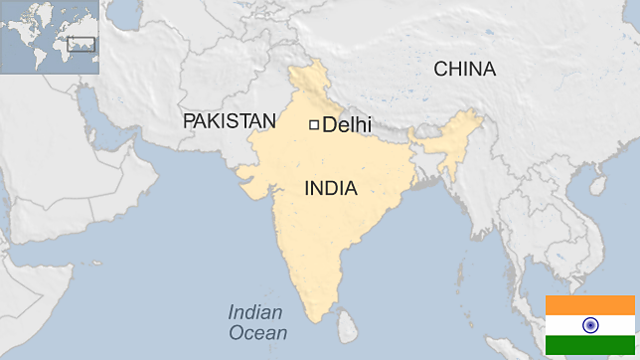Hardik Patel: Face of Gujarat caste protests
- Published
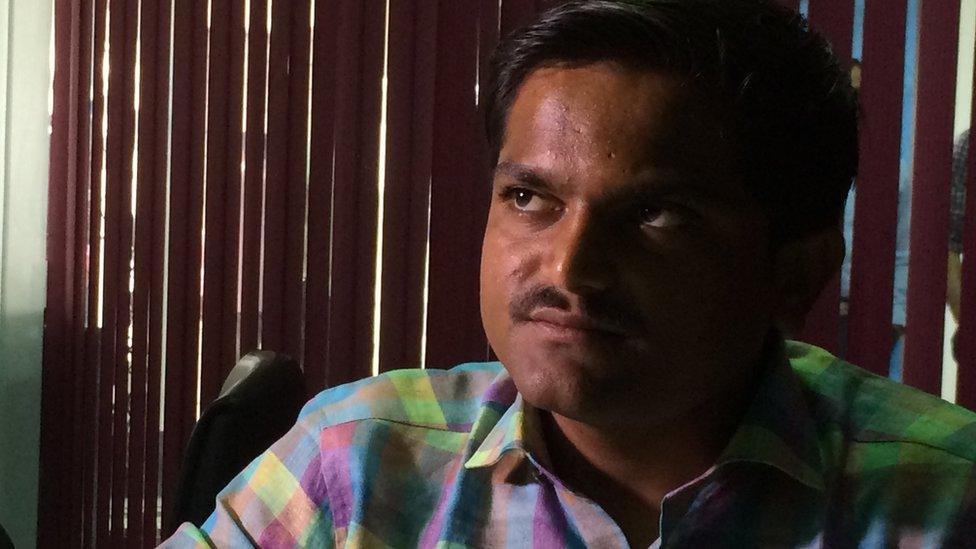
Hardik Patel is dominating headlines in India
A 22-year-old Indian has become the face of massive caste protests which have shut down Ahmedabad, the main city in Prime Minister Narendra Modi's home state of Gujarat. The BBC's Geeta Pandey meets Hardik Patel.
Two months ago, no-one outside Gujarat had heard his name, but today Hardik Patel is making headlines across India.
With his controversial demand that the Patels - or the Patidar caste - be given better access to jobs and education through the quota system, he has acquired millions of supporters in a very short span of time.
On Tuesday, at least 300,000 supporters walked miles to get to the sprawling GMDC ground in the centre of the city to hear him talk about the "injustices heaped on Patels".
Hardik Patel: "If need be we will not hesitate to take the path of violence"
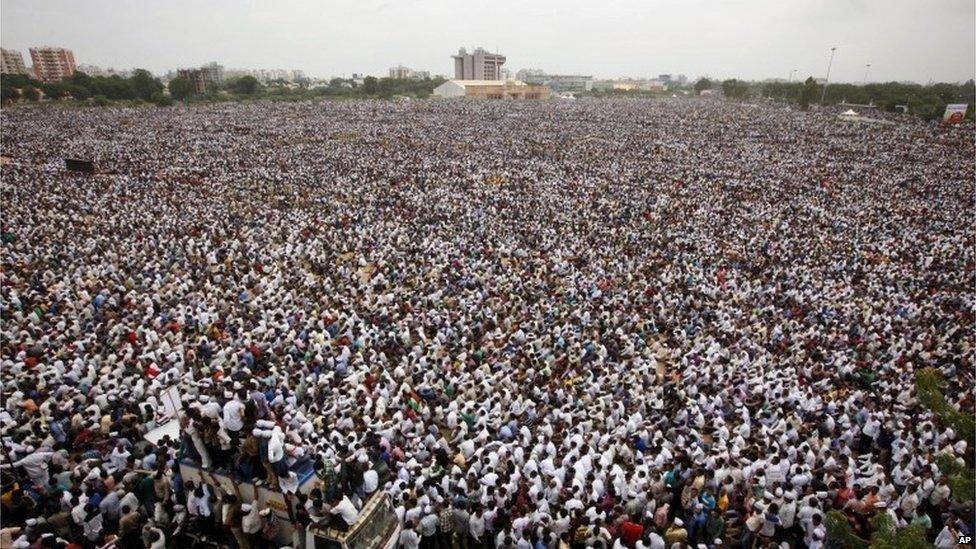
Some 300,000 members of the Patel community attended the meeting in Ahmedabad on Tuesday
In his hour-long speech, he invoked India's independence heroes Mahatma Gandhi and Sardar Vallabhbhai Patel, took a dig at Mr Modi and berated Gujarat Chief Minister Anandiben Patel.
"It's a fight for our rights. If they grant our demand, we will accept it with humility, but if we don't get our right, we will snatch it by force," he said.
Braving the scorching heat, the massive crowds cheered him on, clapping and responding to his questions with raised fists.
At first glance, there is nothing to distinguish Mr Patel from his teeming supporters. The 22-year-old commerce graduate, dressed in a full-sleeve shirt and trousers, is small built and unassuming.
But he is a brilliant speaker, and has won millions with his fiery oratory. And although Mr Patel says he has no interest in entering politics, his supporters are starting to compare him with the prime minister, who is also seen as a self-made leader and is appreciated for his lively speeches.
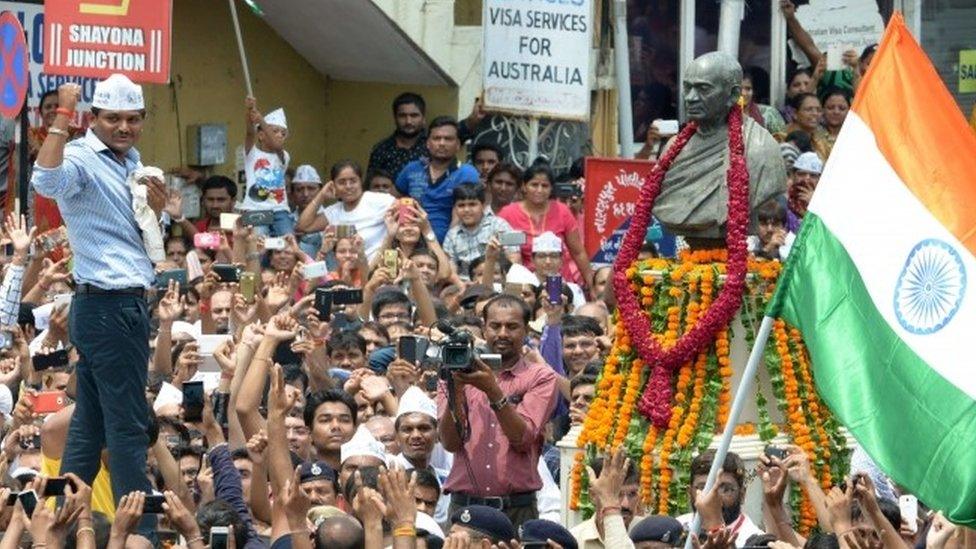
Hardik Patel says he is particularly inspired by Indian independence hero Sardar Patel
Mr Patel tells me he was born in the town of Viramgam near Ahmedabad. His father runs a small business selling water pumps and he lives at home with his parents and a younger sister.
"My sister completed her high school last year and scored very high marks. But she couldn't get a scholarship, whereas students from the castes that are part of the quota system got it with much lower marks."
He began his public career in 2011 when he set up a social organisation to fight "harassment of women and poor farmers" and the idea to demand quotas for Patels in jobs and colleges came to him just a few months ago.
"I was chatting with a few friends and everyone was talking about how even the meritorious amongst us fail to get into colleges or government jobs."
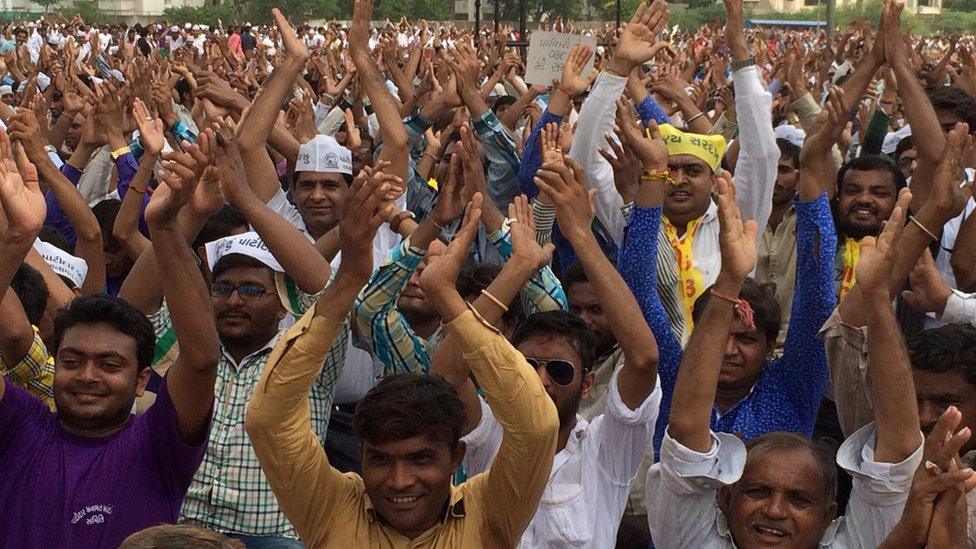
Mr Patel claims he has the support of 52 million people
In recent weeks, his supporters have put out a YouTube video where he is seen posing with a rifle on his shoulder and among his influences, he counts fellow Gujaratis Mahatma Gandhi and Sardar Patel.
He says he is particularly inspired by Patel and his war cry is "Jai Sardaar" (hail Sardar) and many at his rallies appear wearing Sardar Patel's masks.
When he addressed his first rally on 6 July, it was attended by 12,000 people. His second drew about 50,000. And then last week, reports said 450,000 people had turned up to hear him in Surat.
On Tuesday, Mr Patel claimed nearly a million people were present at his Ahmedabad rally, although police said they had counted about 300,000 supporters with help from security drones.
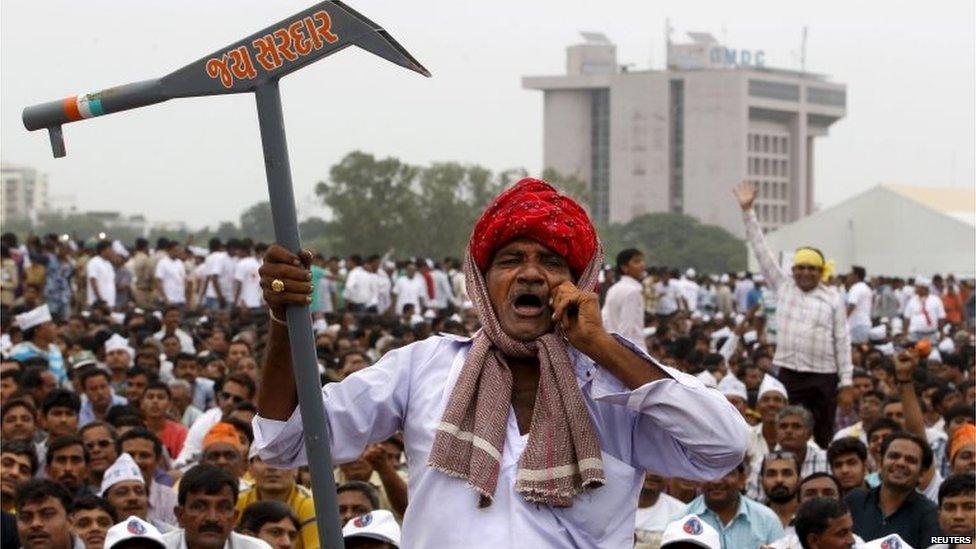
Patels comprise about 20% of Gujarat state's population
His sudden rise to prominence has taken the authorities by surprise - the Gujarat chief minister, herself a Patel, has ruled out their demand for quotas, but she has named a group of ministers to talk to Hardik Patel. The talks so far have failed to yield any results.
Patels, who comprise about 20% of the state's population, control India's thriving diamond cutting and polishing industry and are among the most prosperous businessmen and farmers in Gujarat. As a community they are politically powerful.
They are also thriving on foreign shores where they are known for their enterprise and business acumen - there are more than a quarter of a million Patels in the UK and about 200,000 in the US.
But Mr Patel says it's a myth that all Patels are rich.
"Only five to 10% of Patels are prosperous, that doesn't make the entire community rich. If you visit a village home in the Saurashra region, you'll see people don't have enough to eat. There are so many poor people. And if you look at the farmers who have killed themselves in the past 10 years, the largest numbers are from among the Patels," he says.
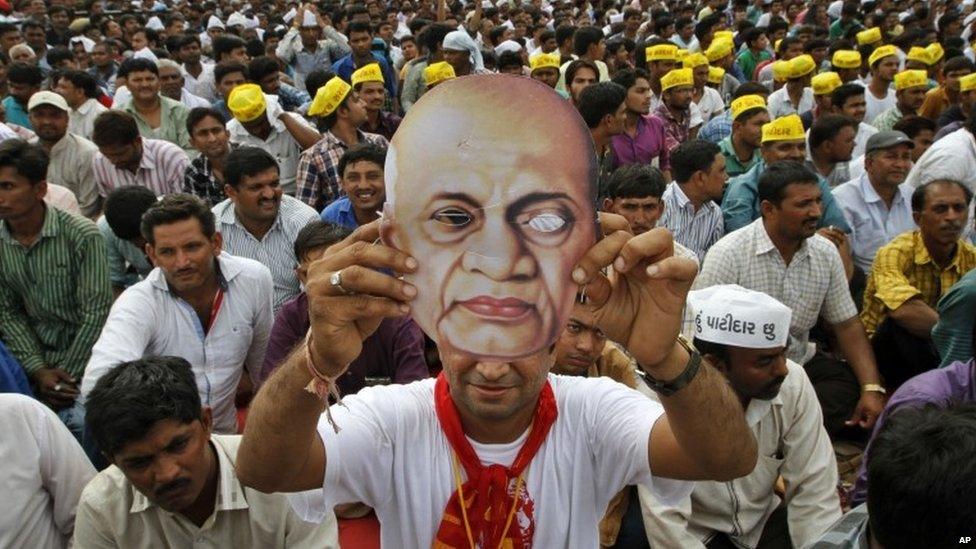
Some in Tuesday's crowd wore masks of India's first home minister Sardar Patel, who has also been adopted by Prime Minister Modi as a BJP icon
With resentment against the quota system growing, and with his largely young supporters getting increasingly restless, Mr Patel has issued a veiled threat to the authorities.
"India and Gujarat are the land of revolutionaries. We believe in peace and love and follow in the footsteps of Gandhi and Sardar Patel. But we are also inspired by revolutionaries like Chandra Shekhar Azad and Bhagat Singh and if need be, we will not hesitate to take the path of violence," he told me, adding that he is in it for the long haul.
"This is not a 100-metre race, it's a marathon. We will call off our agitation only after the demands of Gujarat's 18 million Patels are accepted," he says.
- Published26 August 2015

- Published22 June 2013
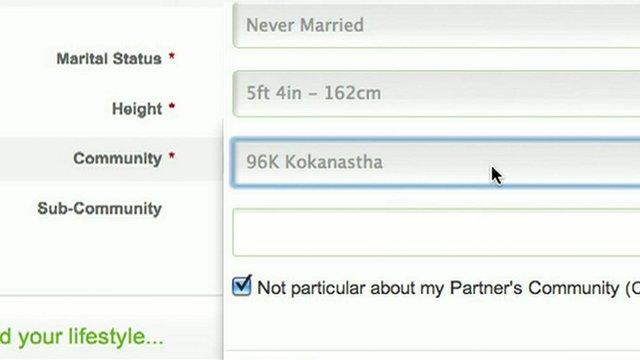
- Published10 March
